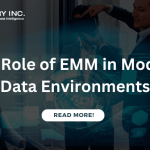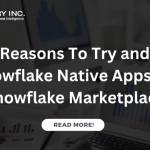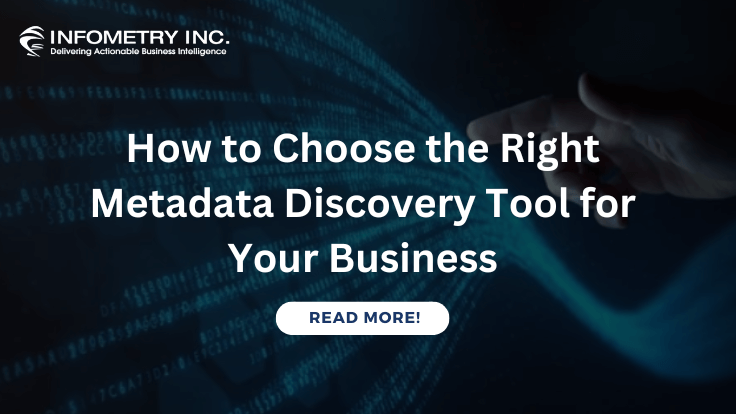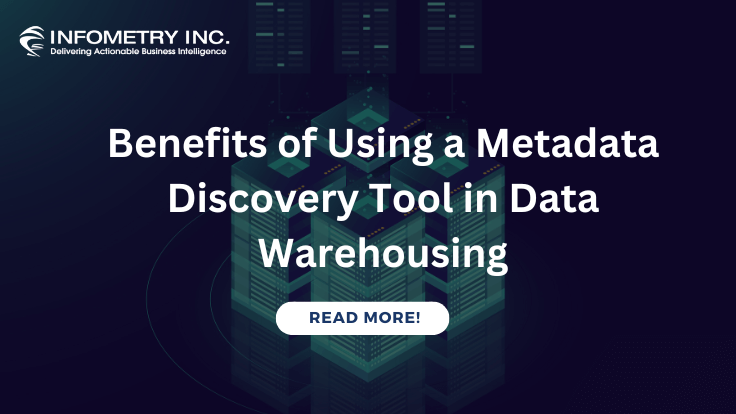
The Role of EMM in Modern Data Environments
March 20, 2024
Top Reasons to Try and Buy Snowflake Native Apps on Snowflake Marketplace
April 2, 2024In the ever-evolving landscape of data management, businesses are constantly seeking ways to optimize and automate their data pipelines for increased efficiency and better decision-making. One such powerful combination gaining popularity is the integration of Matillion and Infometry. In this blog post, we’ll explore the benefits of automating data pipelines with Matillion and the enhanced capabilities brought by Infometry.
The Rise of Data Automation:
In today’s data-driven world, organizations generate and process massive amounts of data daily. To harness the full potential of this data, automation has become a key strategy for businesses. Data pipelines play a crucial role in the seamless flow of information across various stages, from extraction to transformation and loading (ETL) to analytics.
Matillion: A Game-Changing ETL Platform:
Matillion, a cloud-native ETL platform, has gained prominence for its ability to simplify the ETL process. With support for popular cloud data warehouses like Amazon Redshift, Google BigQuery, and Snowflake, Matillion provides a user-friendly interface and pre-built components that make it easy to design and execute complex data transformations.
Key Features of Matillion:
Scalability: Matillion allows users to scale their data operations dynamically, adapting to the evolving needs of the business.
Cloud Integration: With native integration with major cloud platforms, Matillion ensures seamless data processing securely and cost-effectively.
Data Transformation: Matillion offers a range of transformation components, enabling users to clean, enrich, and shape data according to their specific requirements.
Infometry’s Role in Data Automation:
Infometry complements Matillion’s capabilities by providing advanced data integration and analytics solutions. As a strategic partner, Infometry enhances the automation process with its powerful features.
Unified Data Orchestration: Infometry enables unified data orchestration across various sources and destinations, allowing businesses to manage their data pipelines more efficiently.
Intelligent Data Governance: With features like metadata management and data lineage tracking, Infometry empowers organizations to maintain a high level of data governance and compliance.
Advanced Analytics: Infometry brings advanced analytics capabilities, allowing users to gain deeper insights into their data and make more informed business decisions.
Best Practices for Implementing Matillion and Infometry:
Implementing Matillion successfully requires a thoughtful approach to ensure optimal performance, scalability, and maintainability. Here are some best practices for implementing Matillion in your data environment:
Understand Your Data Environment:
Before diving into implementation, thoroughly understand your data environment, including data sources, destinations, and the specific requirements of your data processing workflows. A clear understanding of your data landscape will guide your Matillion implementation strategy.
Follow a Modular Design Approach:
Design your Matillion workflows in a modular fashion, breaking down complex tasks into smaller, manageable components. This not only enhances readability and maintainability but also allows for easier troubleshooting and debugging.
Utilize Matillion’s Pre-Built Components:
Leverage Matillion’s extensive library of pre-built components and transformations. This can significantly accelerate development, reduce the chance of errors, and ensure best practices are followed. Matillion provides a variety of connectors for different data sources and destinations, so make use of them whenever possible.
Optimize Data Processing:
Matillion provides options for parallel processing and optimization. Take advantage of these features to ensure efficient data processing. Optimize your workflows by parallelizing tasks, using appropriate joins, and minimizing unnecessary data movements.
Implement Error Handling and Logging:
Build robust error handling into your Matillion workflows. Implement mechanisms to capture and log errors, and set up notifications to alert administrators when issues arise. Proper error handling ensures the reliability of your data pipelines.
Secure Sensitive Information:
Follow best practices for securing sensitive information such as database credentials and API keys. Matillion provides options for managing and encrypting sensitive data, so use these features to maintain a high level of security.
Version Control:
Implement version control for your Matillion projects. This ensures that changes to your ETL processes can be tracked, rolled back if necessary, and shared among team members. Popular version control systems like Git can be integrated with Matillion.
Regularly Monitor and Optimize Performance:
Set up monitoring for your Matillion jobs to track performance metrics. Regularly review and optimize your workflows to ensure they are running efficiently. Identify and address any bottlenecks or areas for improvement.
Document Your Work:
Maintain comprehensive documentation for your Matillion projects. This includes documenting the purpose of each job, the logic behind transformations, and any dependencies. Clear documentation is essential for onboarding new team members and troubleshooting issues.
Train Your Team:
Ensure that your team is well-trained on Matillion. Matillion offers training resources, including documentation, webinars, and community forums. Investing in your team’s knowledge will enhance the efficiency and effectiveness of your Matillion implementation.
Plan for Scalability:
Design your Matillion workflows with scalability in mind. As your data volume grows, ensure that your pipelines can handle increased loads. Consider using dynamic parameters and optimizing resource utilization to accommodate future growth.
Stay Informed about Updates:
Matillion regularly releases updates and new features. Stay informed about these updates and consider incorporating new features into your workflows to take advantage of the latest improvements.
By following these best practices, you can maximize the benefits of Matillion, streamline your ETL processes, and ensure a robust and scalable data integration solution for your organization.
Conclusion:
Automating data pipelines with Matillion and Infometry is a strategic move for businesses aiming to stay competitive in the data-driven landscape. By combining the user-friendly ETL capabilities of Matillion with the advanced analytics and data orchestration features of Infometry, organizations can streamline their data workflows, enhance data governance, and unlock valuable insights for better decision-making. The collaboration between Matillion and Infometry represents a powerful synergy that empowers businesses to harness the full potential of their data assets.




